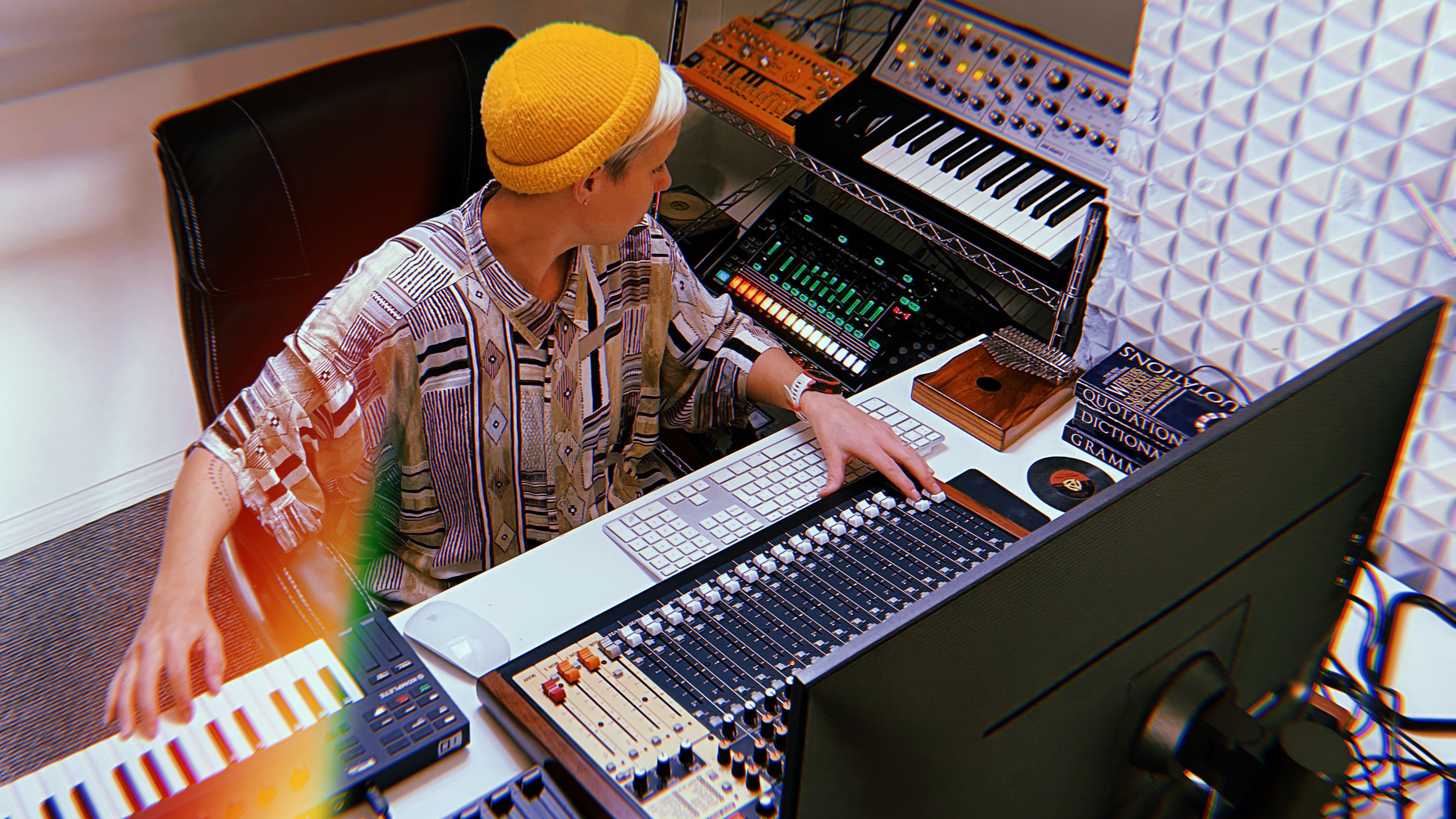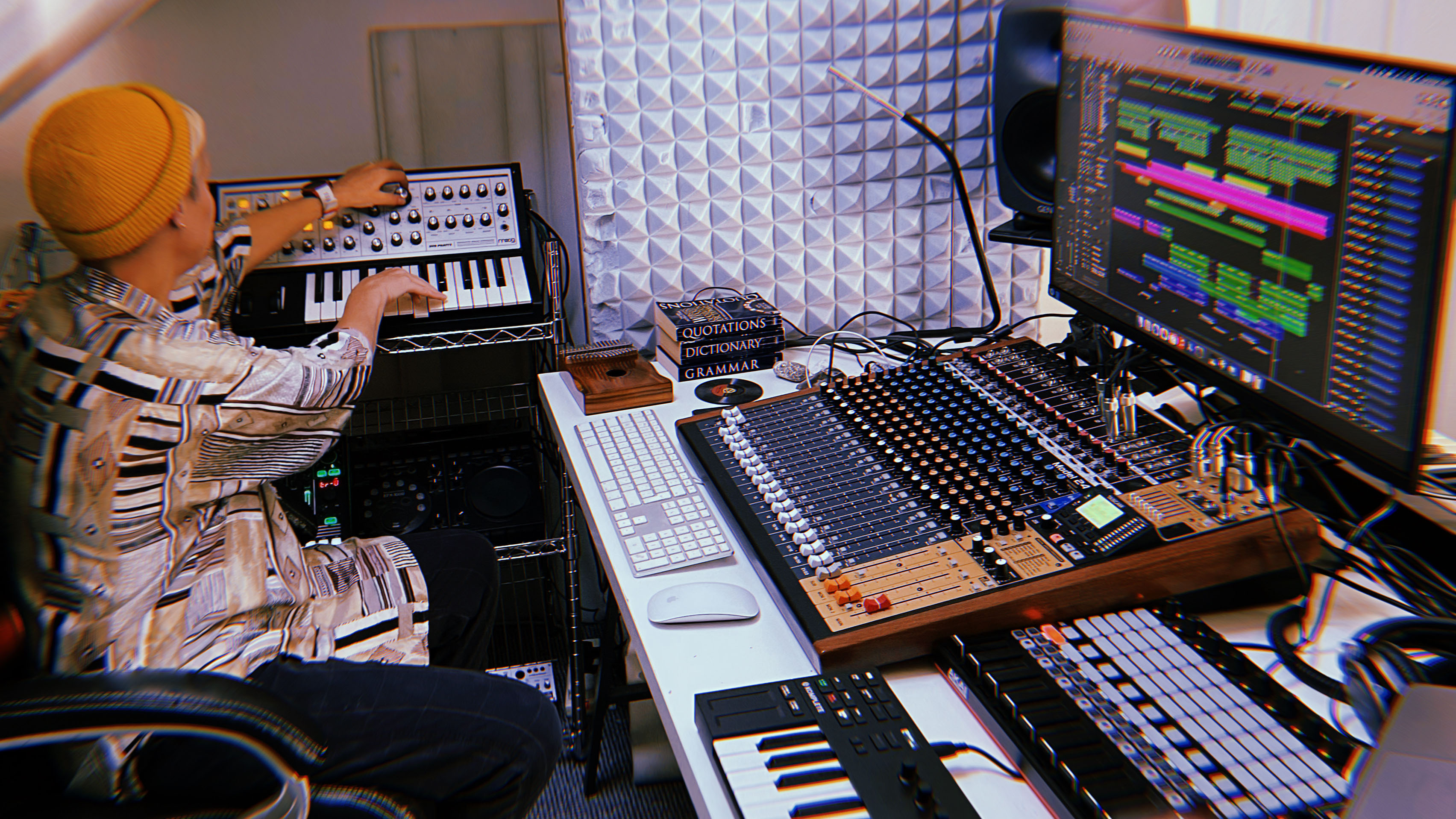Just Her: 5 things I've learned in music production
We speak to the Anjunadeep and Circus signee ahead of her appearance at Brighton Music Conference

Both as a solo producer and through her work in the duo Him_Self_Her, Claire Spooner – aka just Her – has marked herself out as a highly creative producer able to blend carefully-crafted sound design with ear-grabbing melodies.
Her career to date has seen her releases land on labels including Anjunadeep, Armada, Circus, Get Physical and Global Underground. Ahead of her session at this year’s Brighton Music Conference - which takes place from the 25 to the 27 May – we caught up with Just Her to talk creativity, sound design and how to stay productive.
1. Less is more
“Probably the most important thing I’ve learned about music production – which has taken me a while to realise – is that less is more in pretty much every way. Starting out I would go crazy with EQ and compression on every sound in every track, thinking it was vital to my mix, or to ‘fix’ sounds that weren’t sitting right. Actually, all this was doing was stifling the mix and killing the natural dynamics of the sounds.
“Someone then gave me a golden piece of advice – to remove as much EQ and compression as possible and work on getting the sound right at the source instead. Suddenly my mixes came alive. Game changer!
“A similar mistake is trying to add too many sounds or different instruments to ‘fill’ the mix, which can actually result in a cluttered and overworked arrangement or mix down. It’s much better to strip things back and choose only the right sounds, utilising the whole frequency range and stereo width, using tools like delay and reverb to fill spaces. And of course making sure you have a killer hook to drive the track and hold the arrangement together.
“A final aspect to the ‘less is more’ idea is imposing limitations on studio time and kit. It’s very easy to buy a huge amount of analogue gear and/or plugins and then sit for hours and hours in the studio, tweaking into oblivion and never finishing anything. It can be super helpful to add some restrictions in either time, or the equipment you will use for a track (or both) and stick strictly to this.
“You suddenly find yourself making decisions more quickly and moving on. The best tracks are almost always the ones that fall together really quickly.”
Want all the hottest music and gear news, reviews, deals, features and more, direct to your inbox? Sign up here.
2. Thicken your sounds
“It may sound contradictory to point one but hear me out… In order to achieve more with less it is important to really work the sounds you have to the fullest and achieve as much thickness and harmony as you can.
“Layering sounds is the simplest way to achieve this and has become a staple for me, particularly for drums, bass and synth sounds. Often a synth melody of mine will consist of four or five layers of sound, each subtly covering a slightly different frequency range with careful use of synthesis and EQ.
“It is important, however, to have an awareness of phase cancellation when using this method, particularly when layering low end sounds like a kick drum or bass.
“Another brilliant – although slightly more technical – way of achieving this is to use parallel processing. This involves creating an auxiliary track containing some compression, distortion, or any combination of effects, depending on the tone of the track. You can then add this in parallel to any desired sounds via sends, allowing you to dial in just the amount you need in order to create that extra harmony and thickness. This is a particularly great way of pumping up your drum sounds.”

3. The beauty of repurposing (and happy accidents)
“A great way to maximise creativity and form new original ideas is to use items for a different purpose and see what results you get. For example – running a synth melody through a vocal plug in, or moving your MIDI pattern from one channel to a different instrument channel and seeing how it sounds through a different plugin.
“A trick that I use super often is adding vocal parts into Ultrabeat (this is Logic’s drum machine plugin, but you can do this with any drum sample playback instrument) and triggering them with different start and end points, and in reverse to create random glitches or different phrasing.
“Accidents can often spark a new idea too, so don’t be afraid to just play around with sounds and instruments, trying to create in free flow without judgement or an end goal - this is often where the best ideas are hidden.”
4. Get perspective
“Spend hours in the studio working on the same loop over and over and you will lose your perspective and point of reference without a doubt. Every producer has got lost in a long late night studio session, creating something that they think is amazing in the depths of the sleep deprivation, only to listen back in the morning and realise it is rubbish.
“Short sessions or switching between different projects is key. Also, have a bank of reference tracks on hand to quickly listen to in order to reaffirm your perspective. These should be tracks that you admire for the mix down, the arrangement or the overall sound and aesthetic.
“As a solo producer it is also super helpful for me to get second opinions on tracks, so I will always send a new project out to some trusted ears for feedback. However, it’s important to remember that art is subjective and your music is your music, so stick to your gut if you don’t agree with someone’s opinion.”
5. Creativity and productivity are key
“Ultimately with electronic music, the listener is usually consuming your art on a dancefloor, in a car, or somewhere similar. They’re likely just enjoying the moment and the musicality; they don't care how long you spent EQing your snare or tweaking your compression settings.
“Dedication, productivity and creativity are more important than studio gear or technical jargon in my opinion. A great hook, melody or arrangement are the most important elements of a track for those moments of euphoria on the dancefloor, or for the home listener.
“Of course tracks still need to be solidly produced, but the best way to achieve this is to just get in the studio and make as much music as possible. Even if you throw some of it away. Your music will get better with each track you make and you can gradually add in new techniques, methods or studio gear as you go. This is a better way of improving than getting lost in YouTube videos and trying to learn every technique all at once. Just. Make. Music.”
Just Her will be speaking on the 'Art of the Remix' panel on Friday 27th May at the Brighton Music Conference and DJing at the Lady of the House networking event on Thursday 26th May at the Southern Belle.
Future Music is the number one magazine for today's producers. Packed with technique and technology we'll help you make great new music. All-access artist interviews, in-depth gear reviews, essential production tutorials and much more. Every marvellous monthly edition features reliable reviews of the latest and greatest hardware and software technology and techniques, unparalleled advice, in-depth interviews, sensational free samples and so much more to improve the experience and outcome of your music-making.
